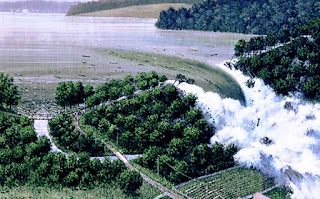1. Johnstown Dam Disaster:
2. St. Francis Dam Disaster:
3. Canyon Lake Dam Disaster:
4. Mill River Dam Disaster:
5. Buffalo Creek Dam Disaster:
The Buffalo Creek flood was a disaster that occurred on February 26, 1972, when the Pittston Coal Company's coal slurry impoundment dam #3, located on a hillside in Logan County, West Virginia, burst, four days after having been declared 'satisfactory' by a federal mine inspector. The resulting flood unleashed approximately 132,000,000 US gallons (500,000 m3) of black waste water, cresting over 30 ft high, upon the residents of 16 coal towns along Buffalo Creek Hollow. Out of a population of 5,000 people, 125 were killed, 1,121 were injured, and over 4,000 were left homeless. 507 houses were destroyed, in addition to forty-four mobile homes and 30 businesses. More details
6. Walnut Grove Dam Disaster:
7. Austin Dam Disaster:
8. Laurel Run Dam Disaster:
The Laurel Run Dam, also known as Laurel Run Dam No. 2, was an earthen embankment dam that failed during the 1977 Johnstown flood. It had the largest reservoir of seven dams to fail between July 19 and 20, 1977 and caused the most fatalities of the two that did. The dam failed in the early morning of July 20 after period of heavy rain, causing 101 million US gallons (380,000 m3) of water to flood downstream Tanneryville, killing 40 people. More details
9. Kelly Barnes Dam Disaster:
10. Lower Otay Dam Disaster:
11. Teton Dam Disaster:
The Teton Dam was an earthen dam on the Teton River in Idaho, United States. It was built by the Bureau of Reclamation, one of eight federal agencies authorized to construct dams. Located in the eastern part of the state, between Fremont and Madison counties, it suffered a catastrophic failure on June 5, 1976, as it was filling for the first time. The collapse of the dam resulted in the deaths of 11 people and 13,000 cattle. The dam cost about $100 million to build, and the federal government paid over $300 million in claims related to its failure. Total damage estimates have ranged up to $2 billion. The dam has not been rebuilt. More details










